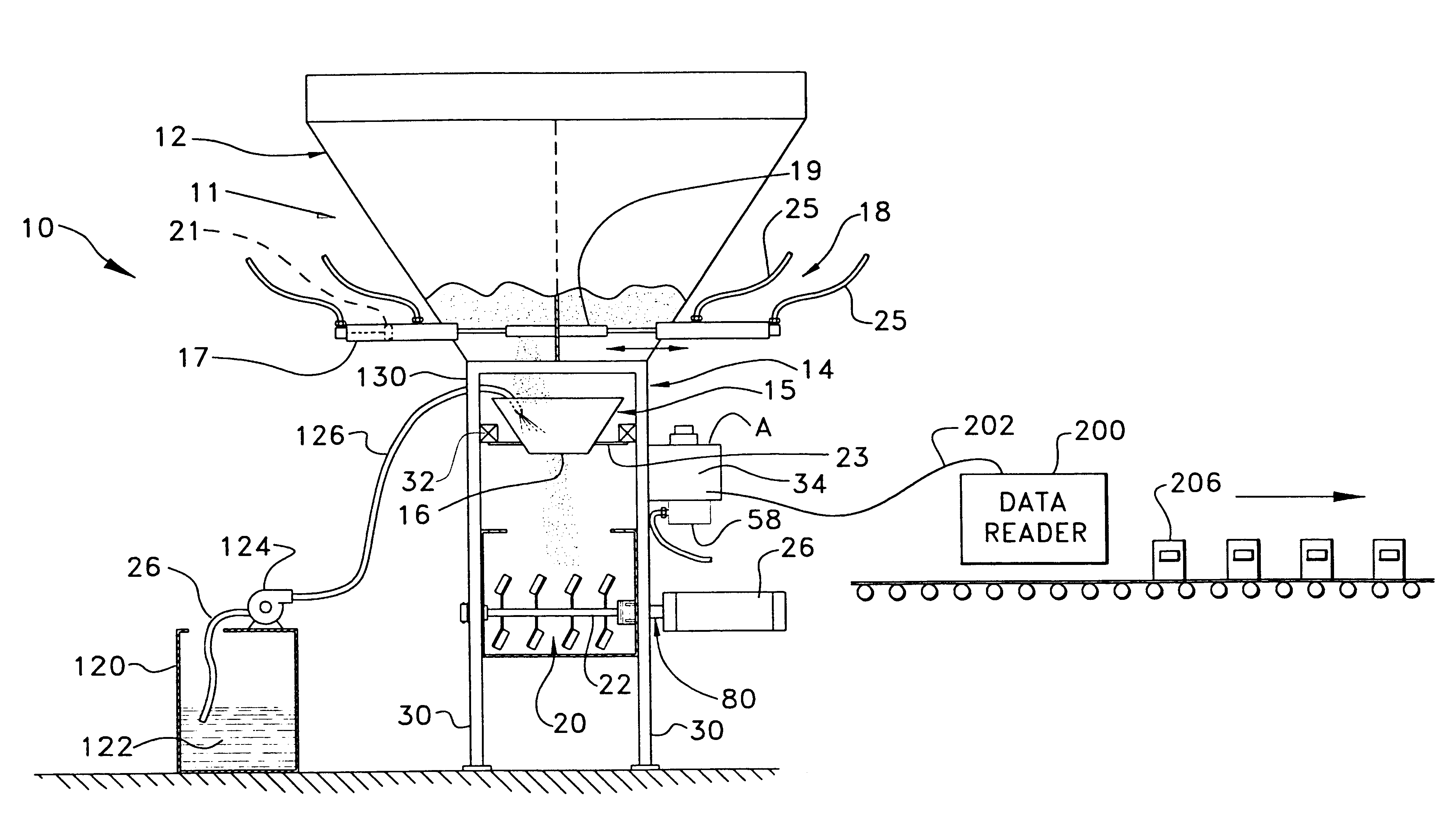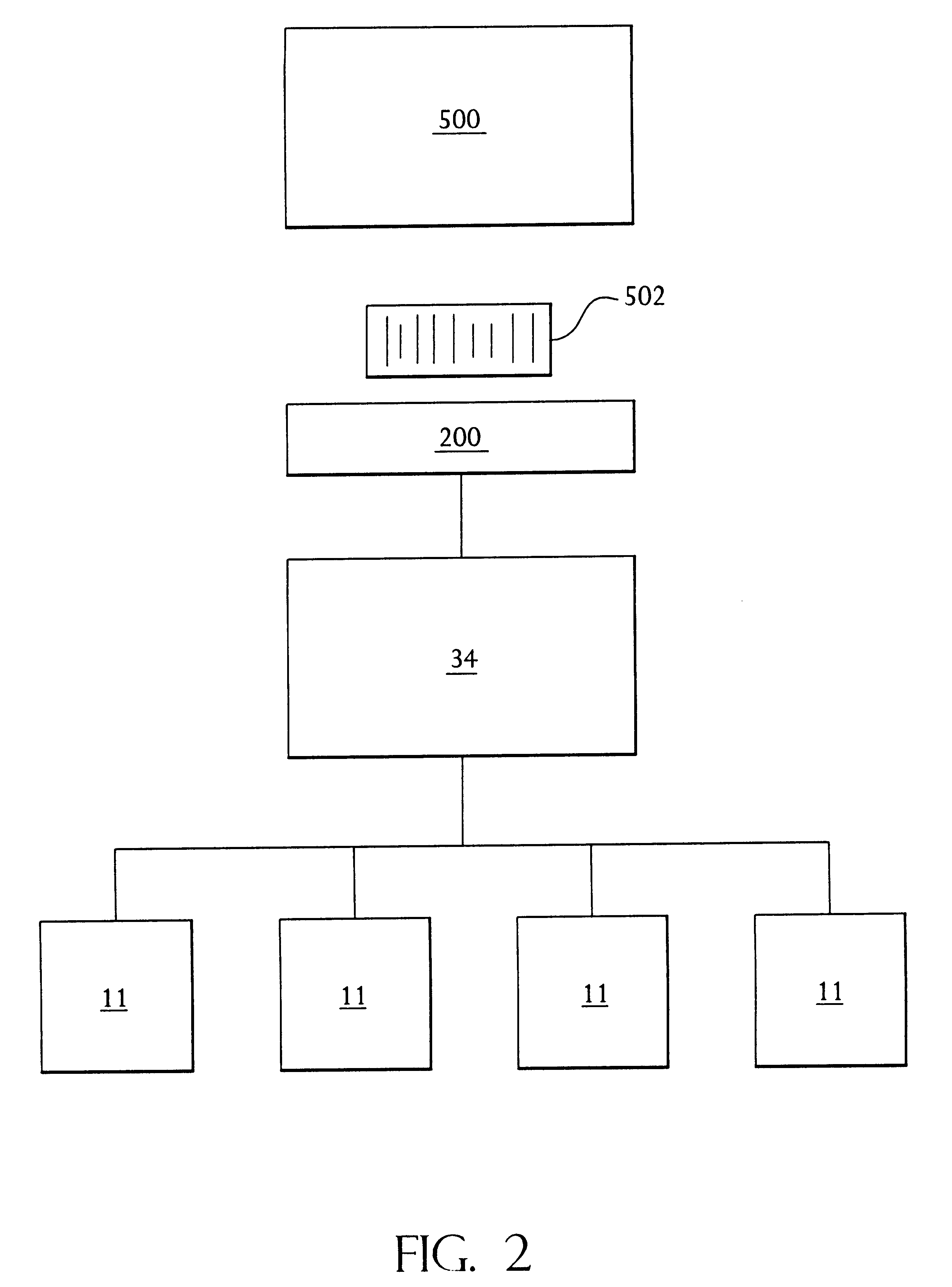Gravimetric blender with operatively coupled bar code reader
a gravimetric blender and bar code reader technology, applied in the direction of process and machine control, electric programme control, program control, etc., can solve the problems of not requiring additional coloration, defective product, and liquid color material cannot be pre-blended into one of the solid material components and stored,
- Summary
- Abstract
- Description
- Claims
- Application Information
AI Technical Summary
Benefits of technology
Problems solved by technology
Method used
Image
Examples
Embodiment Construction
Referring to the drawings and to FIG. 1 in particular, a gravimetric blender together with an optional color addition pump and an optical or magnetic reader or bar code command and / or data reader combination is illustrated with this combination being indicated generally 10.
In the context of this invention, it is to be understood that reference to optical or magnetic "character" readers is not to be construed as being limited readers which recognize alphanumeric character data to the exclusion of readers which recognize binary characters. Both binary and alphanumeric character command and / or data readers are encompassed within the term "character reader" as used herein.
The gravimetric blender is designated generally 11 and includes a hopper, designated generally 12, supported by a frame designated generally 14 which holds a weigh bin 15 into which portions of plastic resin material, and optionally liquid color material, can be metered and weighed prior to release into a mix chamber 2...
PUM
| Property | Measurement | Unit |
|---|---|---|
| pressures | aaaaa | aaaaa |
| suction pressure | aaaaa | aaaaa |
| weight | aaaaa | aaaaa |
Abstract
Description
Claims
Application Information
 Login to View More
Login to View More - R&D
- Intellectual Property
- Life Sciences
- Materials
- Tech Scout
- Unparalleled Data Quality
- Higher Quality Content
- 60% Fewer Hallucinations
Browse by: Latest US Patents, China's latest patents, Technical Efficacy Thesaurus, Application Domain, Technology Topic, Popular Technical Reports.
© 2025 PatSnap. All rights reserved.Legal|Privacy policy|Modern Slavery Act Transparency Statement|Sitemap|About US| Contact US: help@patsnap.com



